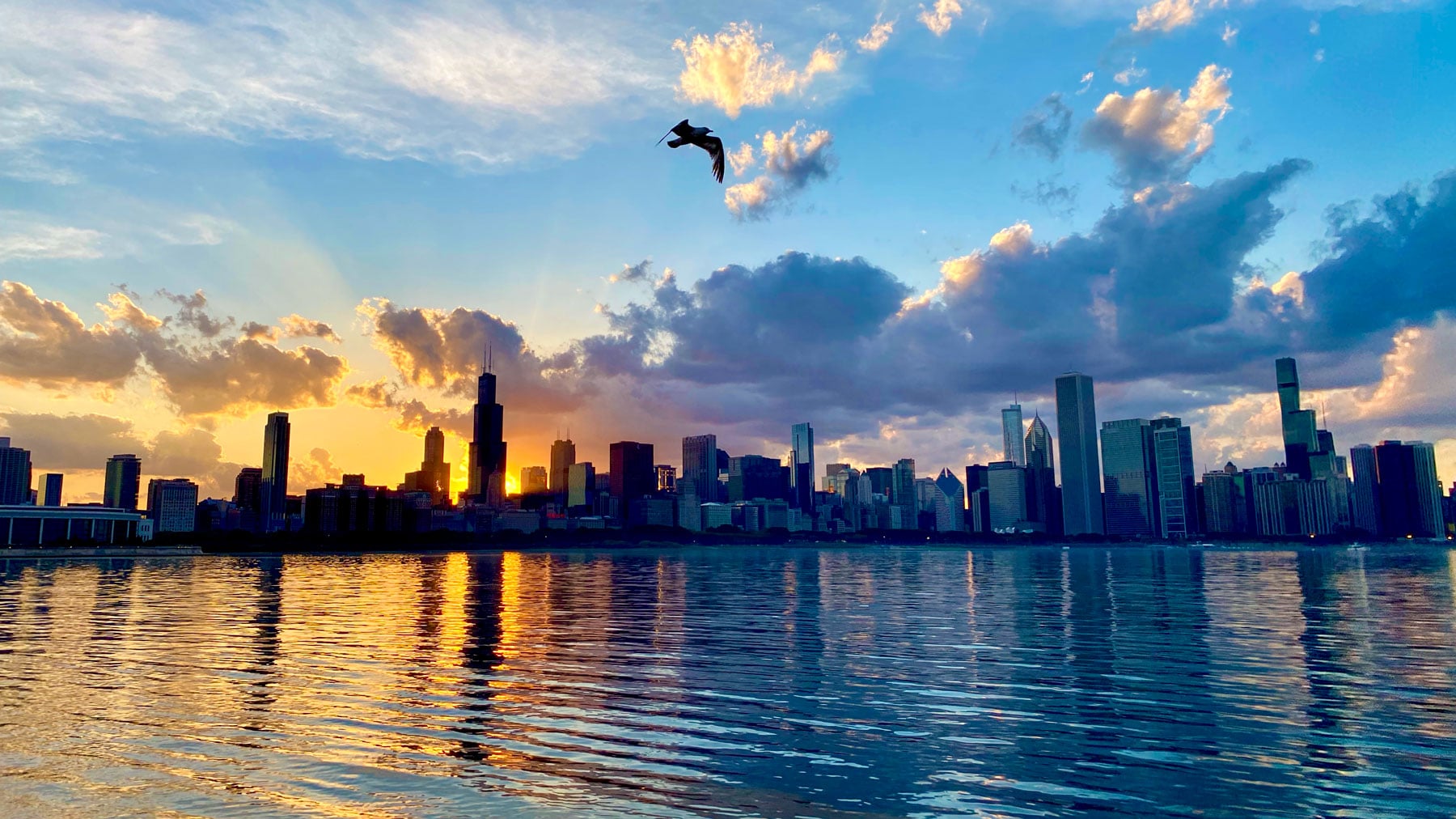Take a stroll in Jackson Park or near Montrose Beach or in any of the forest preserves around Chicago, and you can encounter birds of all shapes, sizes, colors, and songs. Congratulations! You are birding.
“You can go anywhere and appreciate birds,” Matt Igleski, executive director of the Chicago Bird Alliance, said. “It’s a really good hobby to get into because it really puts you in your present space. You have to be very aware of what you’re looking at. You’re thinking about the habitat that you’re in….You don’t have to be an expert. You can appreciate birds however you want.”
Some 300 bird species can be found in the Chicago area throughout the year, Igleski said. While some of them are migratory birds who stick around only for the spring and summer, there is a stunning variety of species in and around Chicago, so it was no easy task for Igleski to pick out some of the most beautiful.
“Beauty is in the eye of the beholder, right?” Igleski said. “It’s like asking people, ‘What’s the best kind of music?’”
The beauty of birds is not the result of endless hours in front of a mirror or a skincare routine but rather evolution.

A group of birders in Jackson Park shows Geoffrey Baer the beauty of birding.
“These birds have evolved to have all these really cool, unique markings and colors. Basically that is for attracting mates and for trying to show how fit [they] are evolutionarily.”
Igleski compared people’s love of birds to our love of flowers: one of the reasons we find them beautiful is because there are seemingly endless colors – which, by the way, are often brightest in males during the spring migration when they’re in search of a mate.
Though we know it’s a matter of opinion, Igleski helped us narrow down the list of some of the most beautiful birds in the Chicago area, which span the color spectrum. A quick note: we didn’t want to risk hurting the birds’ feelings, so we did not rank them. All birds are winners here.
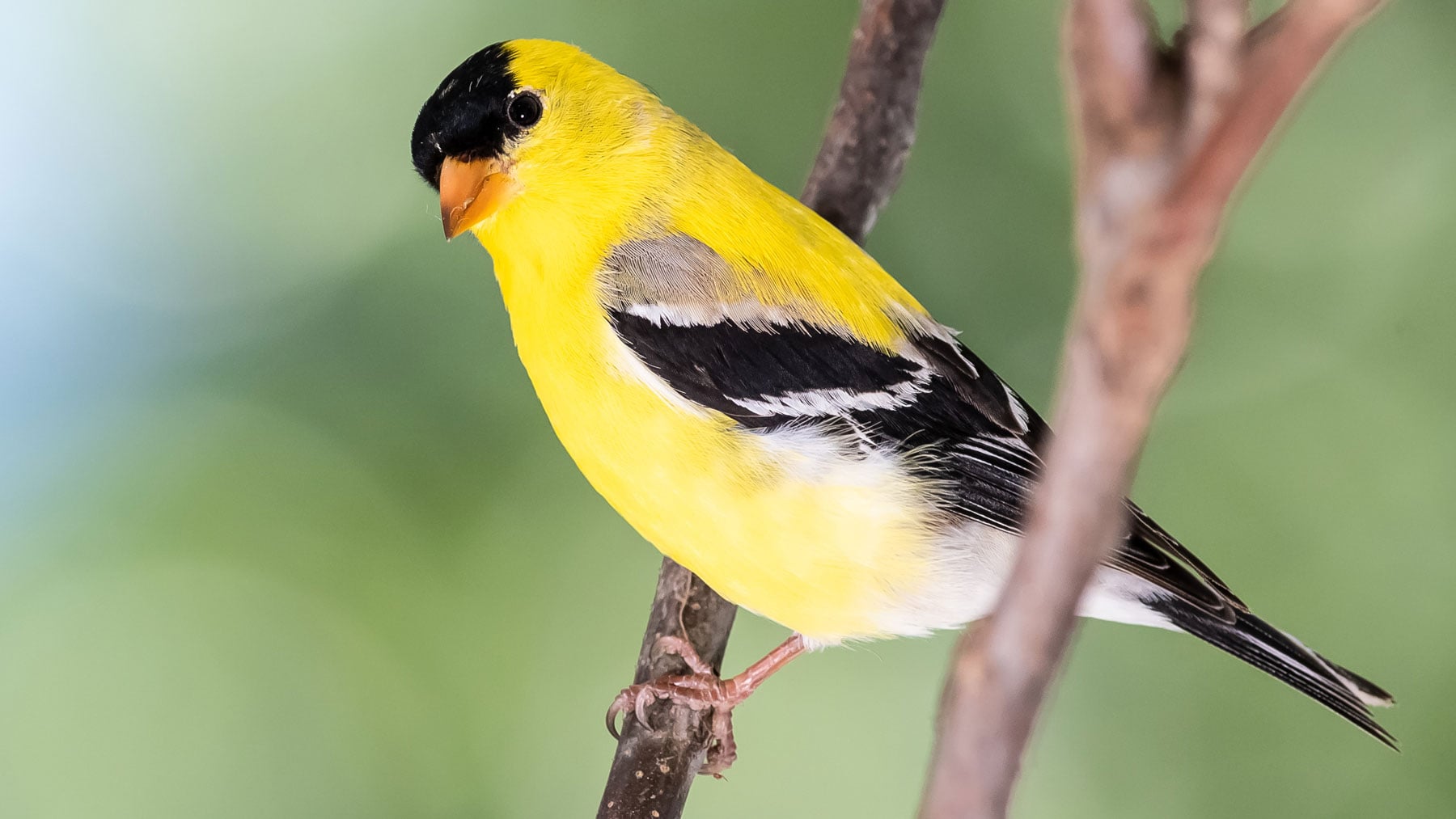
American Goldfinch
The American goldfinch is what Igleski described as the “quintessential” yellow bird. “When people think of a yellow bird, [they] think of an American goldfinch,” he said. Male American goldfinches are mostly a vibrant yellow with black wings and a black spot between their eyes. They turn a more brownish yellow in the fall. They can easily be attracted to your backyard with thistle feeders or with native plants such as coneflowers. Igleski said they sound fun, too – their calls resemble “squeaky toys.”
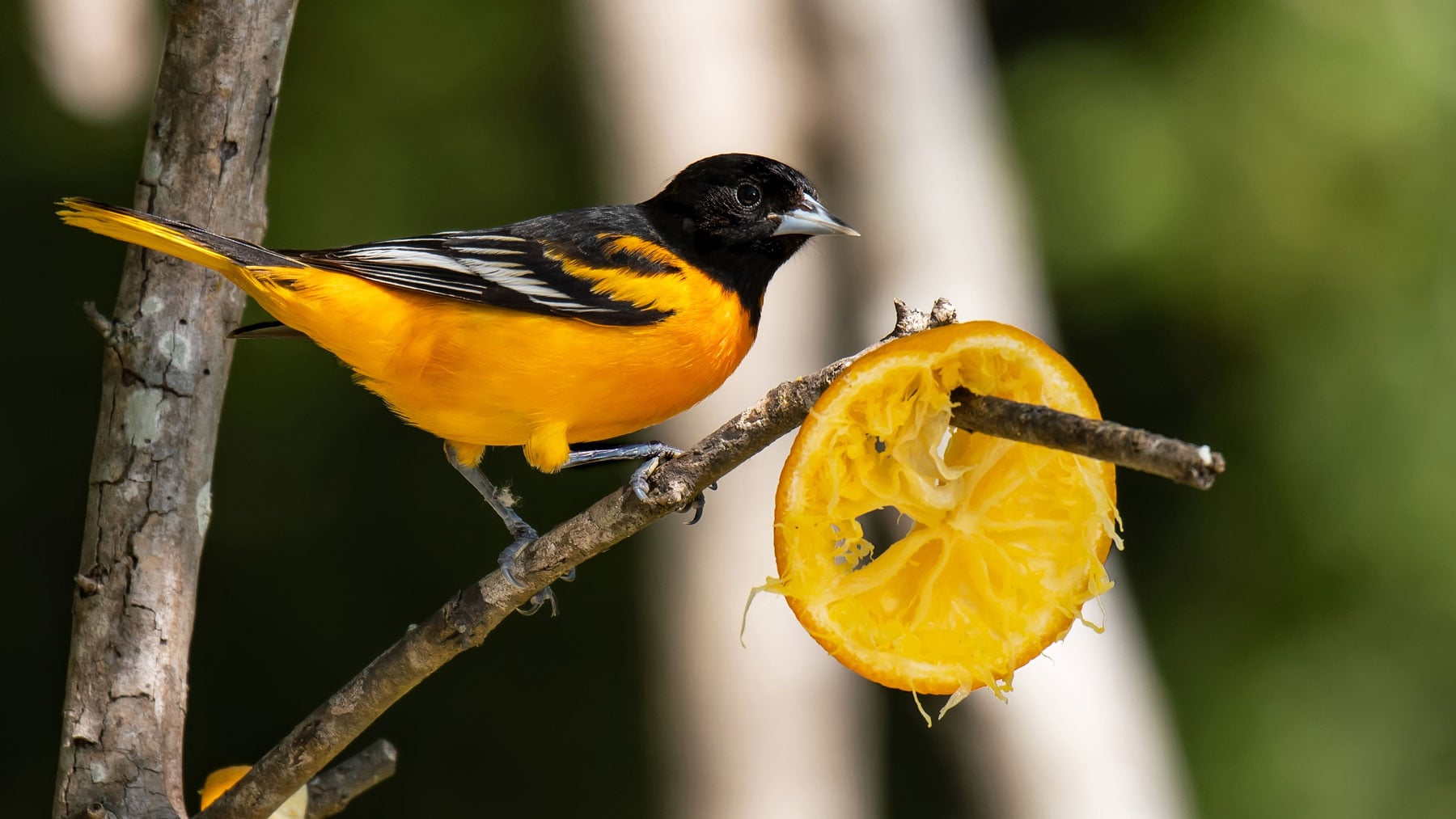
Baltimore Oriole
The Baltimore oriole is “probably one of the coolest” birds because of their blaze-orange bodies and black wings with white markings. They are a migrant bird that is found in Chicago only during the spring and summer. They’re fairly easy to find when they are here, though. “You can also cut an orange in half and stick it out on some branches in your yard,” Igleski said. They will also visit jelly feeders. In addition to their vibrant color, they also have a beautiful, flute-like song. “It just changes your mood when you hear a Baltimore oriole singing,” he said.
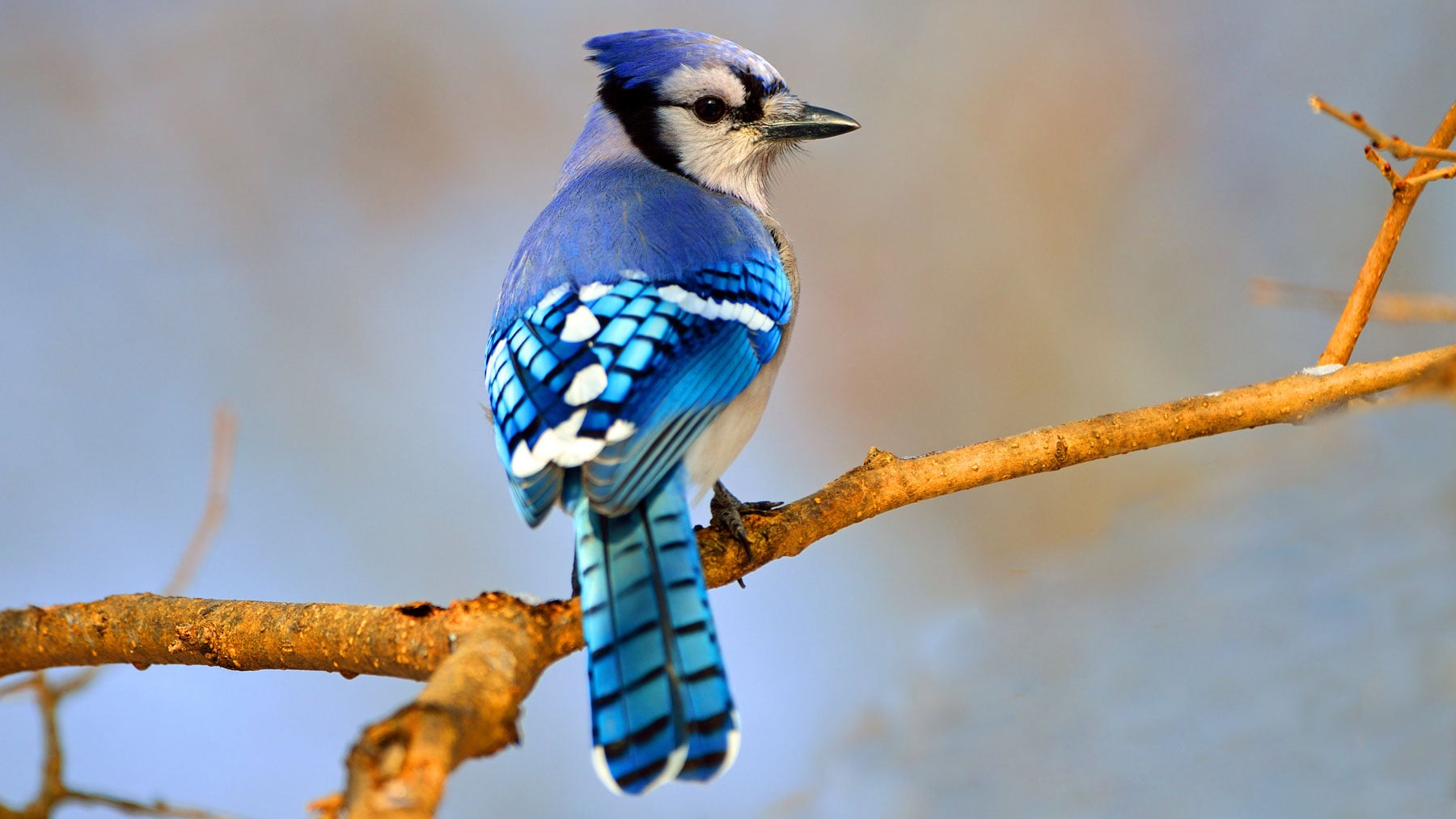
Blue Jay
Of all the jays in North America, the blue jay is the one most commonly found around Chicago. “They’re sort of like a palette of blue,” Igleski said, “Their back almost looks like one of those paint swatches.” Blue jays are intelligent birds, although they are sometimes accused of being bullies at people’s bird feeders. “They’re big, they’re loud. They also have that big crest on their head. They’re just a really fun bird to watch,” he said.
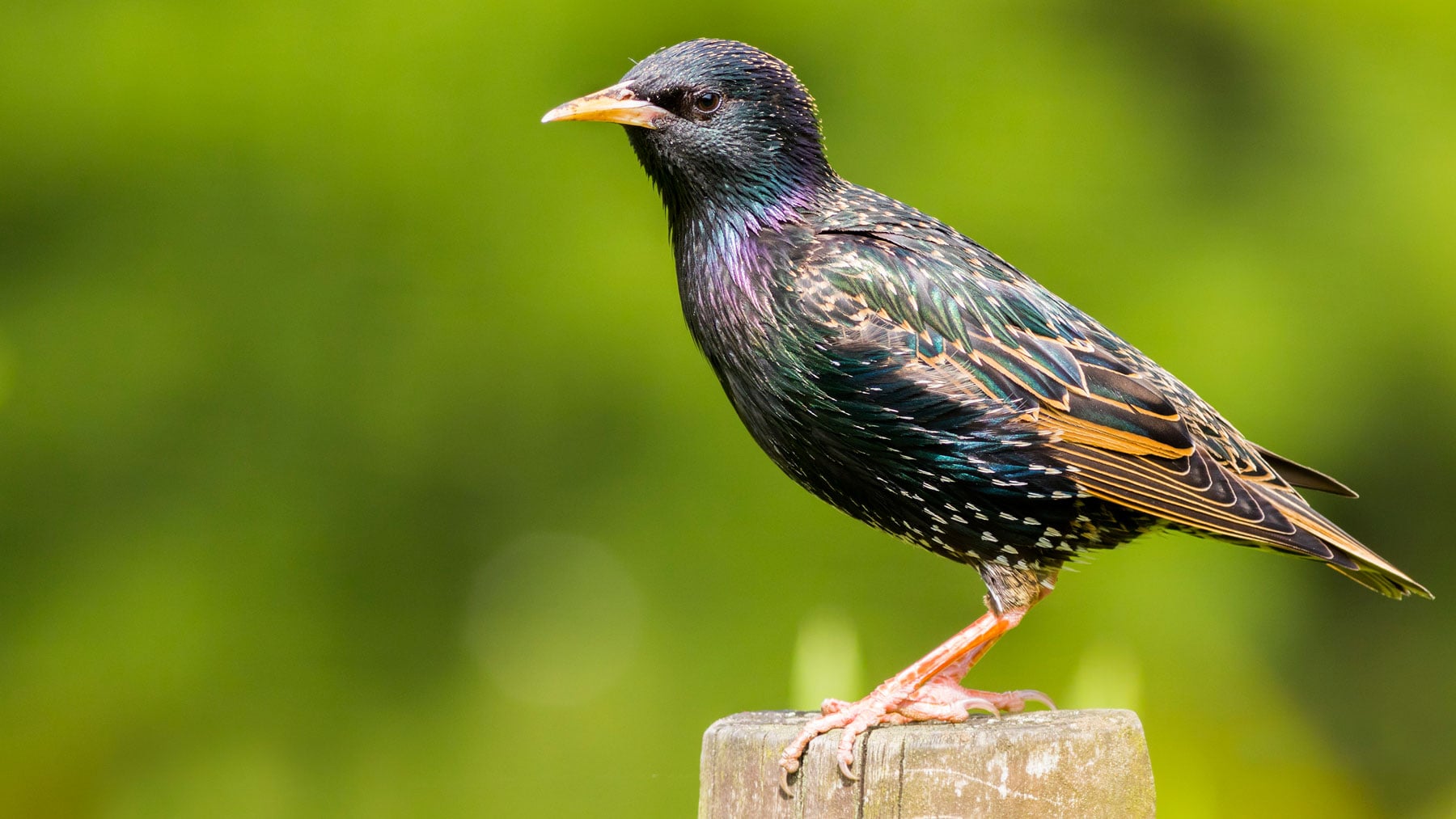
European Starling
Igleski concedes that the European starling might be a controversial pick because they are so common and because they’re not native, but he thinks the fact that they’re ubiquitous is part of their appeal. “This is a bird you're going to probably see everywhere, especially in an urban area,” he said. Originally brought over from Europe in the nineteenth century, the European starling is found in Chicago year-round and has iridescent plumage. “No matter how the light’s hitting them, you might see green and purple and black and all these colors, and then they have these little white dots,” Igleski says.

Indigo Bunting
Another migrant seen in the Chicago area only in the spring and summer, the indigo bunting is one of the more vibrantly blue birds. (The male is, anyway. The females are brown.) The appearance of their blue color is almost like a magic trick. “With any bird that is blue, it’s structural. They’re not actually creating any sort of pigment that makes them blue. It’s all the way the feather is structured and how light is refracted through that,” Igleski said. So depending on the light, they may pop against the backdrop of the forest.
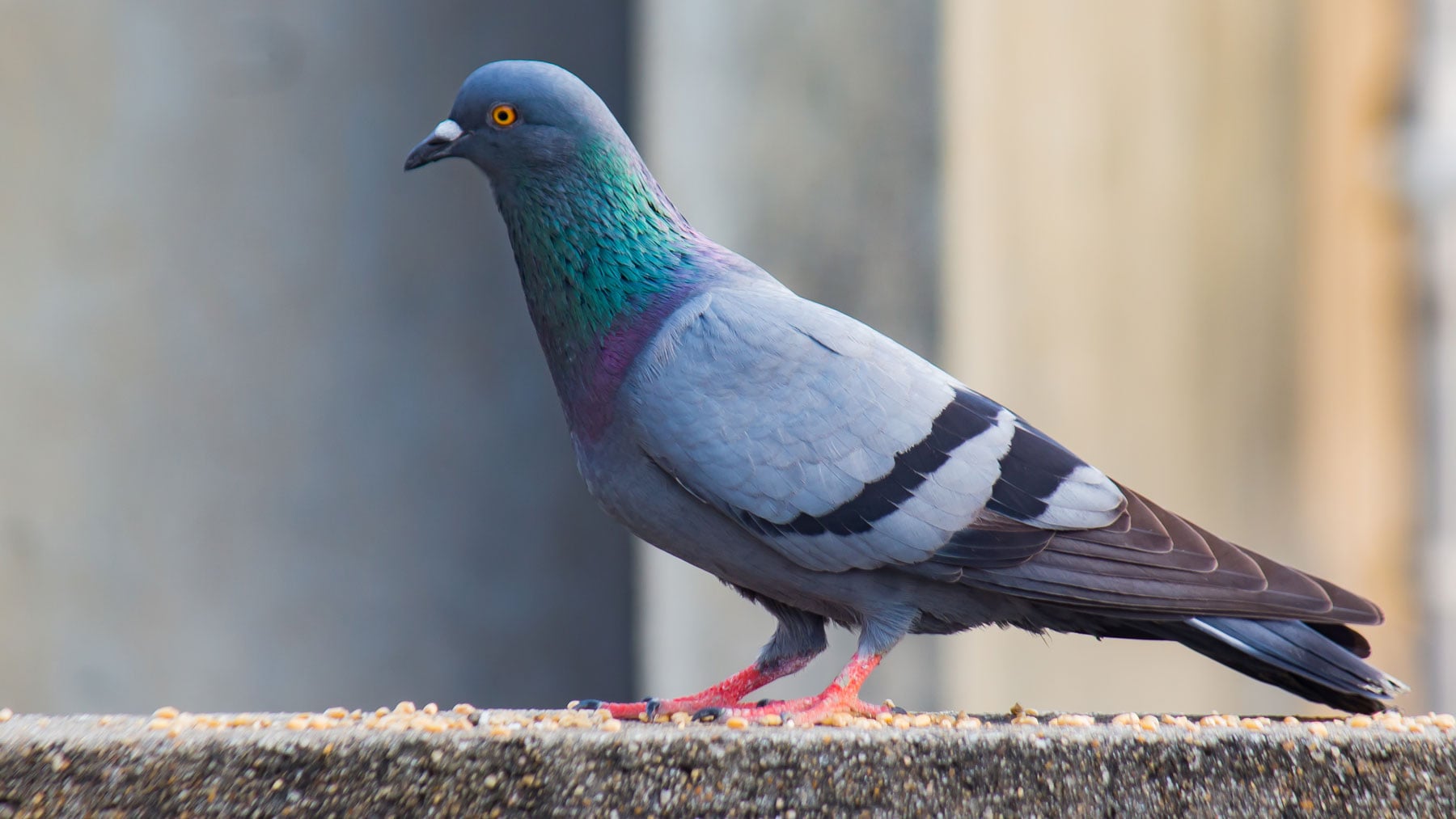
Rock Pigeon
That’s right: the pigeon. They get a bad rap, but Igleski says there is plenty that makes this bird beautiful. The rock pigeon is not originally native to North America, but it has still been around for hundreds of years, particularly in urban areas. In their natural habitat, they tended to nest on rocky cliffs, “so buildings are a great surrogate” for that, Igleski said. If you can set aside your preconceptions about pigeons, you’ll notice what makes them cool: their red feet, red eyes, and the green and purple iridescence on the neck against their gray bodies. “They’re also fun to watch, even when they’re hanging around downtown. They’ll get just close enough to you to maybe try to get some food and then fly away,” Igleski said. (Note: Don’t feed them!)
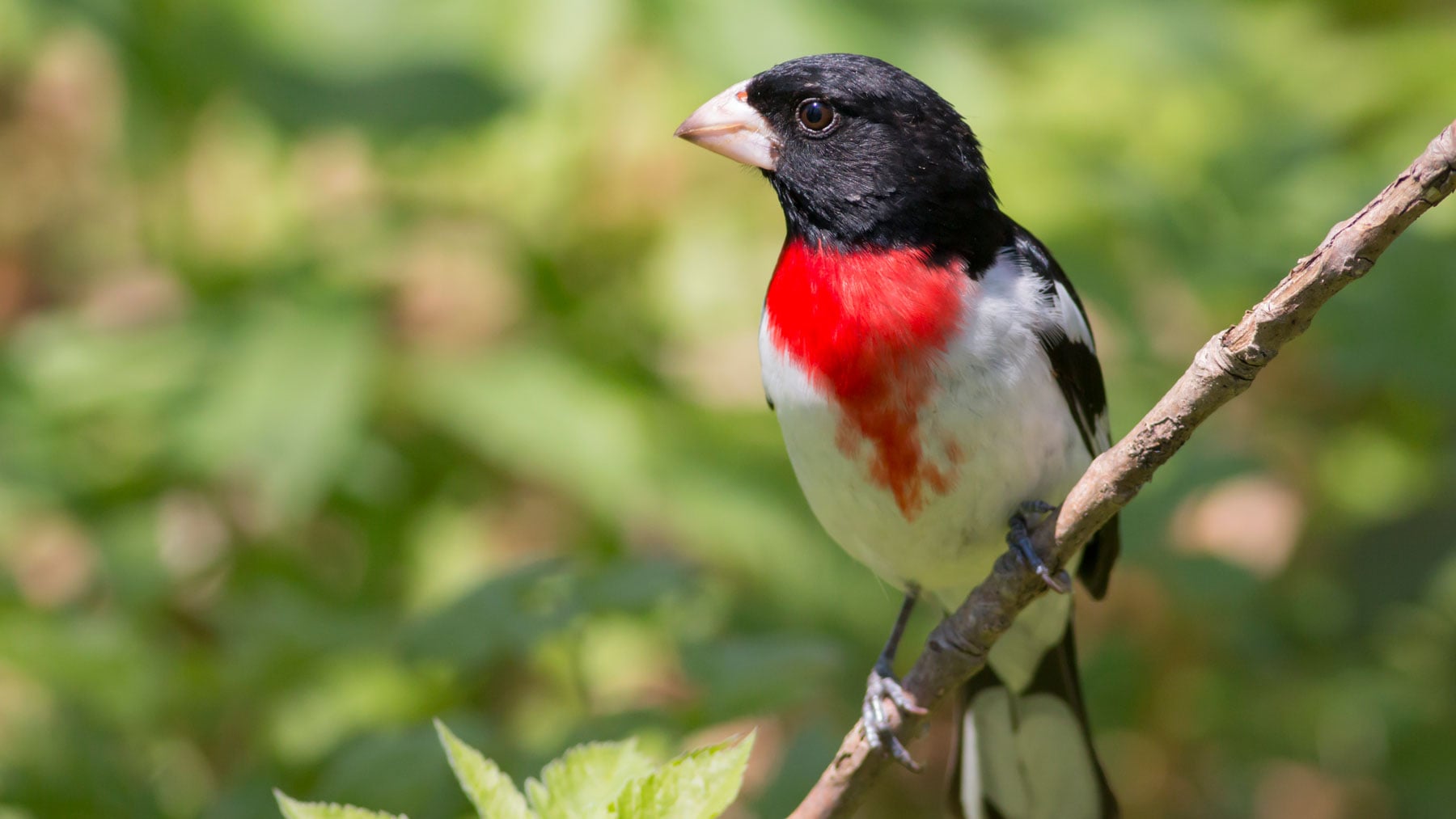
Rose-breasted Grosbeak
The rose-breasted grosbeak is another bird that is in the Chicago area only for migration and breeding, but they’re a fun bird to see when they’re here. The males have a big red triangle on their white chests and a black body and wings with white markings. Their colors are particularly noticeable when they are in flight. They also have a large, distinctive bill. “They're also very easy to get to come to your feeders,” Igleski said. “If you're feeding things like safflower or sunflower seeds, they often will come to what we call platform feeders in your backyard.”
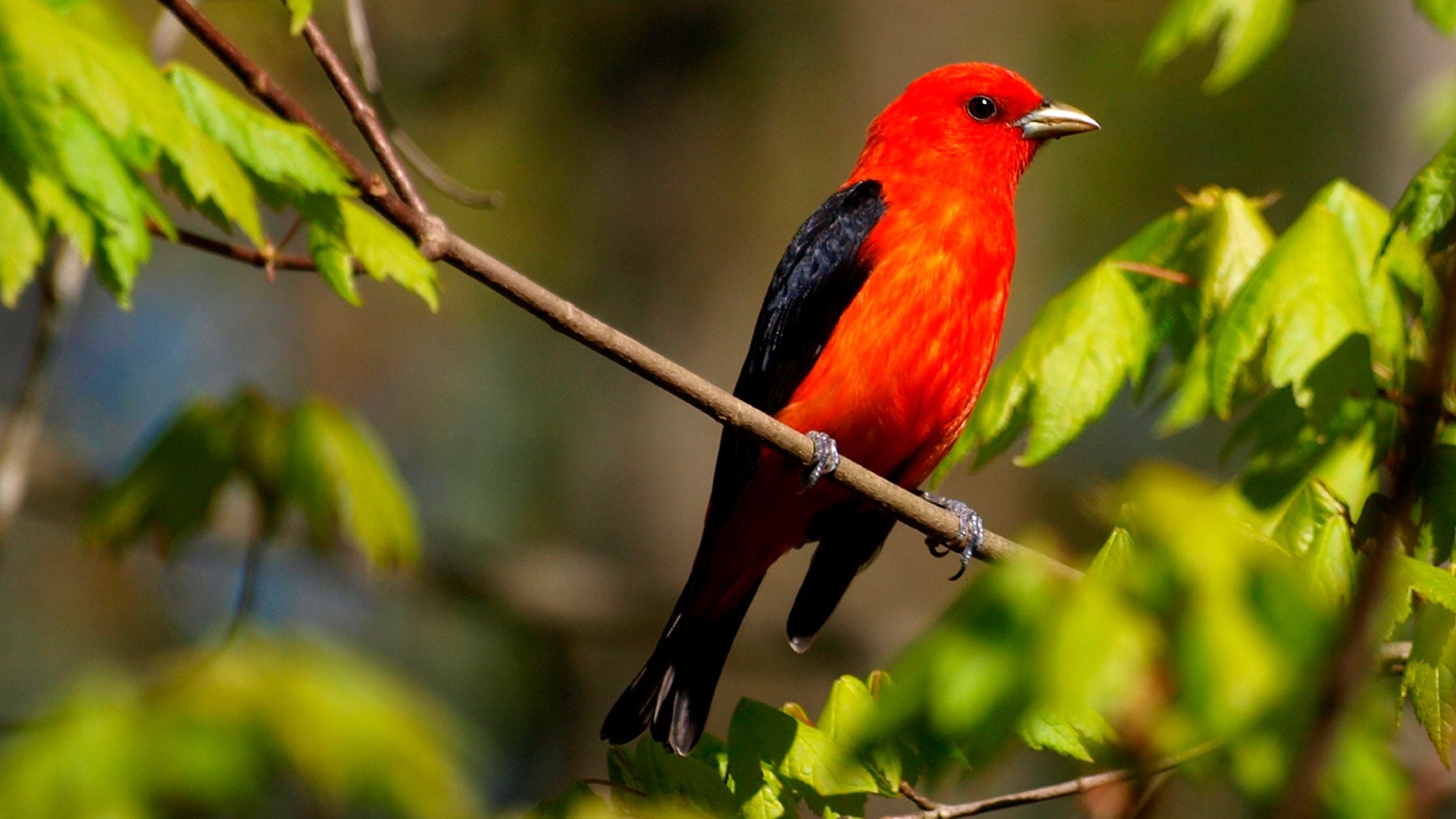
Scarlet Tanager
If you thought the cardinal was red, the scarlet tanager takes that color to another level. Another migrant, the males are a very rich, bright red with black wings. “The females are green, which are also very beautiful in their own way,” Igleski said. “You can often find them breeding in forests, not in Chicago proper, but in some of the surrounding forest preserves.” If you’re in search of a scarlet tanager, focus on listening for their chirruping call. Igleski said they sound similar to a robin but raspier.
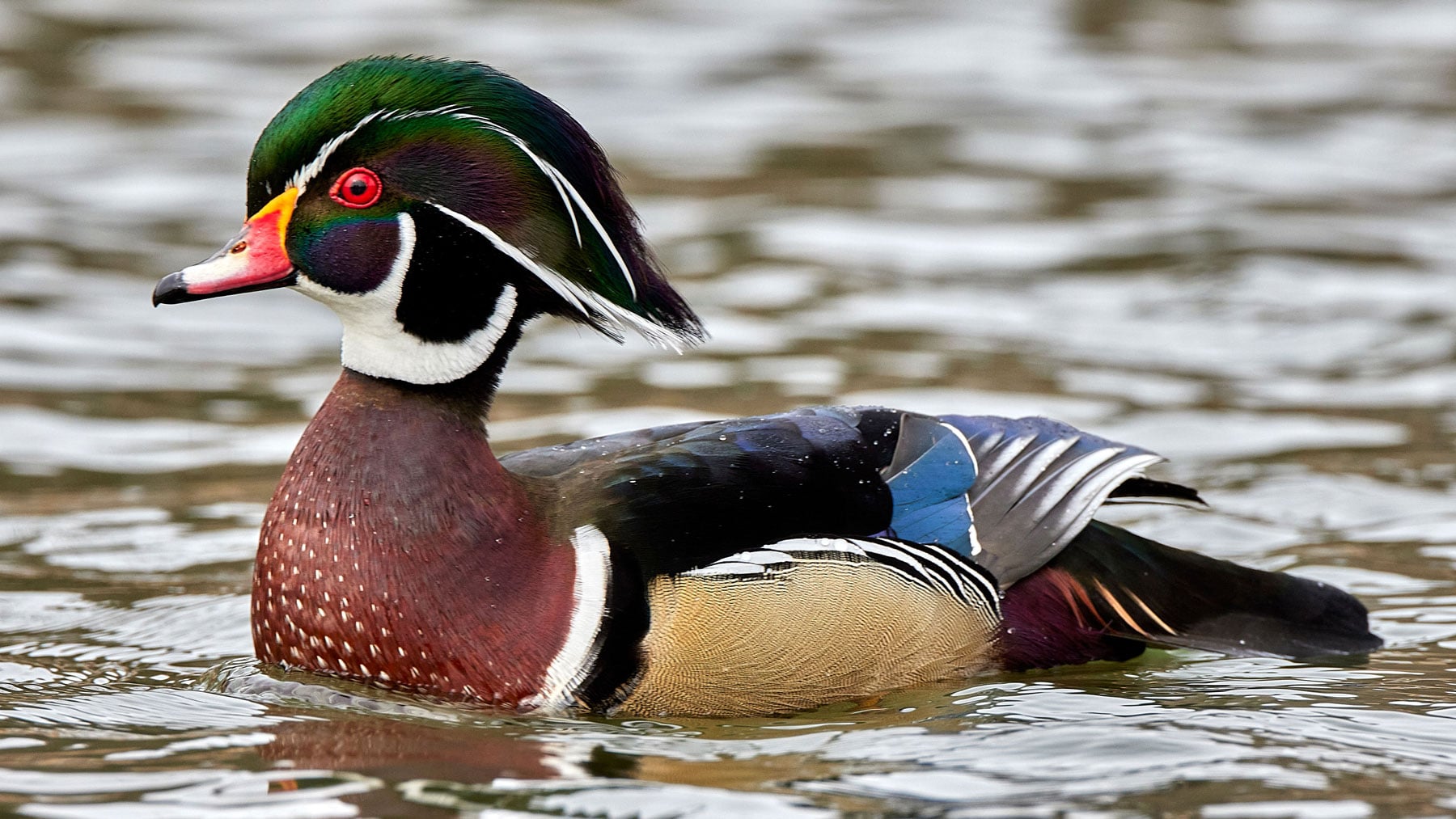
Wood Duck
The wood duck is a mostly migratory bird, though Igleski said there are some that stick around throughout the year, particularly around the North and South ponds in Lincoln Park. “To me, it’s the most striking of any North American duck species,” Igleski said. “Hands down, it’s the most ornate.” The male wood duck is full of color. It has hues of brown, black, and white on its body. It has bright red eyes and a red, white, and black beak. Its head is adorned a sleek crest, colored with green, red, black, and white.
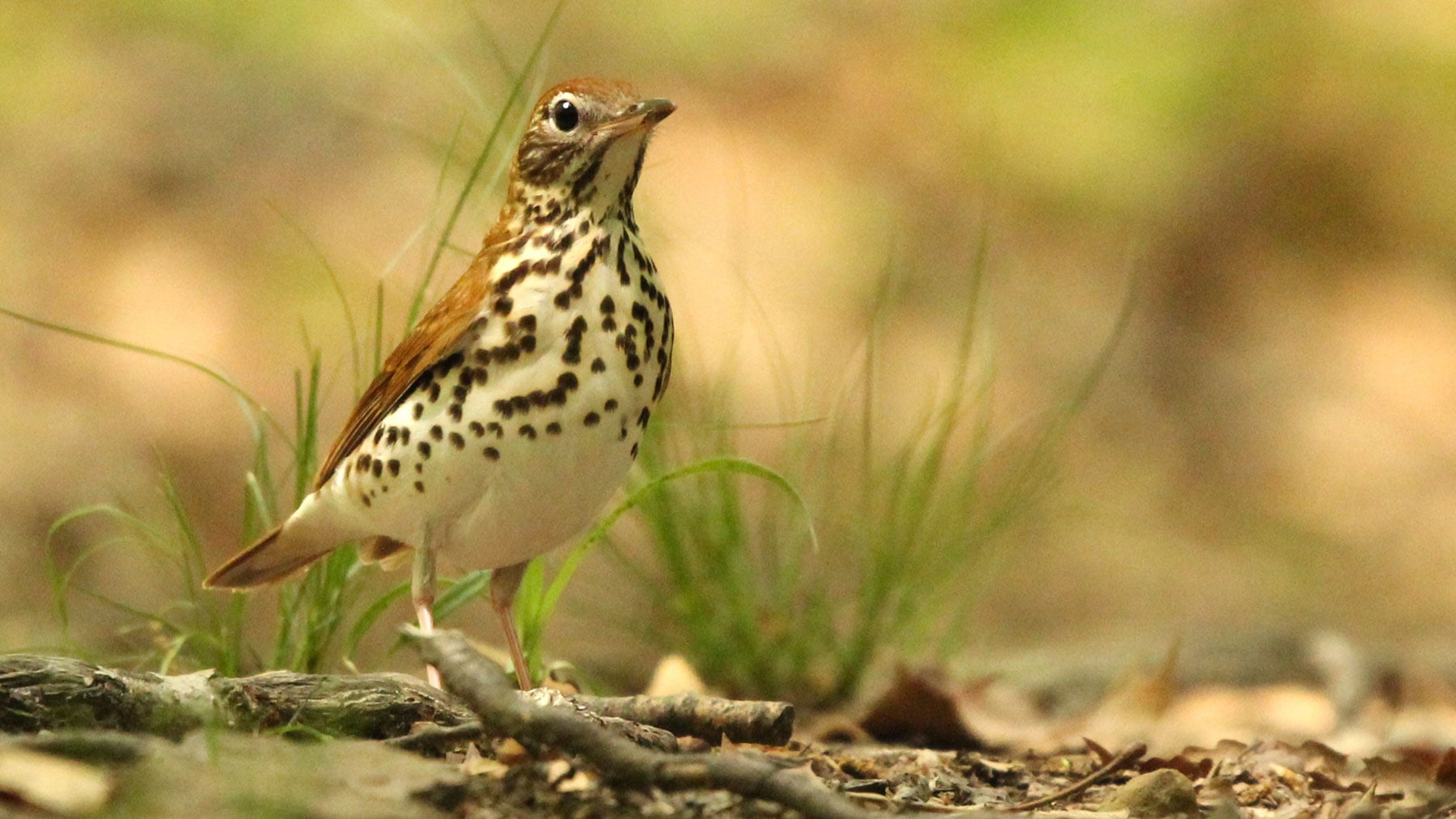
Wood Thrush
The wood thrush is another migrant species found nearby, though more likely outside the city than within. The wood thrush has a rich, reddish-brown back. The bright white plumage on its chest contrasts beautifully with black spots. They are often found foraging on the forest floor.
Igleski says its song is a “double threat – a really cool, flutey, ethereal sound, almost like two notes at once. It’s raspy, but it’s also flutey. If you’re in a wooded area, when you hear a wood thrush singing, it just feels like spring and summer.”

